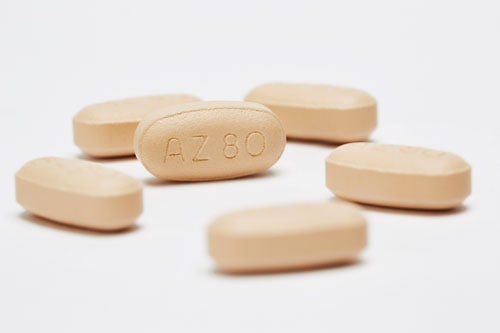Pfizer’s gruelling trek to bring EGFR inhibitor dacomitinib to market has finally paid off, with the FDA approving it as a first-line therapy for non-small cell lung cancer (NSCLC).
The second-generation EGFR tyrosine kinase inhibitor has been shown in trials to be more effective that first-generation drugs such as AstraZeneca’s Iressa (gefitinib) and Roche’s Tarceva (erlotinib) in treating NSCLC patients with EGFR mutations, and able to overcome some cases of resistance to these drugs.
Dacomitinib will be sold in the US as Vizimpro, and has been approved by the FDA after a priority review for NSCLC patients with exon 19 deletion or exon 21 L858R substitution EGFR mutations.
Dacomitinib has been a long haul for Pfizer, as the drug missed its objectives in two phase 3 trials reported in 2014. The drugmaker persisted however, and carried out a third trial (ARCHER 1050) which generated positive results last year. It showed that dacomitinib extended progression-free survival (PFS) compared to Iressa to 14.7 months from 9.2 months, representing a 41% reduction in risk of disease progression or death.
Approval now gained based on that data, Vizimpro will now be able to challenge Iressa, Tarceva and newer drugs such as Boehringer Ingelheim’s Giotrif (afatinib) in the first-line setting. However, the real test of its mettle will come from AZ’s fast-growing Tagrisso (osimertinib) – billed as a third-generation inhibitor – which was approved in the US for first-line treatment EGFR-positive NSCLC in April.
Tagrisso has already established itself firmly as the second-line drug of choice in EGFR-positive NSCLC, topping $1bn in sales in that patient last year group ahead of its first-line approval. AZ has argued strongly that Tagrisso should be used ahead of older drugs and seems to have been successful, with the first-line approval helping sales rocket 89% to $760m in the first half of this year.
The big question is whether Pfizer can build a case for its new drug to be used ahead of Tagrisso, and there are a couple of factors that could make that difficult.

Tagrisso is the drug to beat in the EGFR space
While the ARCHER 1050 efficacy data were impressive, some clinicians give AZ’s drug the edge with its median PFS of 19 months in the FLAURA trial – although clearly that is without the benefit of a head-to-head comparison – and suggest Tagrisso also has a better tolerability profile.
Meanwhile, Pfizer’s trial excluded patients whose tumours had spread to the brain as the investigators were uncertain how well dacomitinib would penetrate the blood brain barrier, while AZ’s drug was shown to be effective against brain metastases in FLAURA.
All could change however when overall survival (OS) data are published for dacomitinib later this year. Tagrisso didn’t show a significant effect on that measure at an interim analysis in FLAURA, but is due to deliver a final verdict in the coming months.
There is also still some debate about the best order to deliver these drugs, as all EGFR inhibitors eventually succumb to resistance and lose their efficacy over time, and some oncologists have argued Tagrisso should be held in reserve rather than given first-line.




